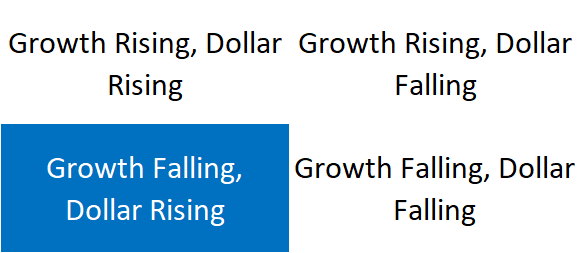
Risk sentiment ended last week on a strong note, and that should carry over into this week. The global liquidity backdrop remains positive for EM, with the ECB widely expected to add more stimulus on Thursday. In a similar vein, the Fed is widely expected to remain on hold until June.
China is doing its part to prevent negative market impact from developments there, including reports of intervening to support the equity markets last week. Lastly, commodities remain bid and WTI oil made a convincing break above $35. All told, these conditions appear sufficient to keep the EM rally going for now.
Some idiosyncratic risks remain, though in Brazil’s case, there are potential positive developments in the political landscape. The Bank of Israel reportedly intervened aggressively to limit shekel gains last Friday. And similar to S&P’s move last month, Moody’s put several oil producing nations on notice for downgrade risk with cuts to their outlook.
Taiwan reports February trade Monday. Exports are expected at -11.8% y/y and imports at -8.4% y/y. It then reports February CPITuesday, which is expected to rise 0.9% y/y vs. 0.8% in January. With the economy contracting and inflation risks low, the central bank is likely to continue easing this year. Next policy meeting is March 24, and a 25 bp cut then is possible.
Hungary reports January IP Monday, which is expected to rise 5.7% y/y vs. 6.9% in December. It then reports February CPITuesday, which is expected to rise 0.5% y/y vs. 0.9% in January. January trade will also be reported Tuesday, which is expected at EUR746 mln. Central bank minutes will be released Wednesday. With deflation persisting, we think further easing is being contemplated. Next meeting is March 22, but no move is seen then.
Chile reports February trade Monday. Exports are expected at -5.9% y/y and imports at -9.5% y/y. It then reports February CPITuesday, which is expected to rise 4.6% y/y vs. 4.8% in January. With inflation easing back towards the 2-4% target, the central bank may pause its tightening cycle. The last move was a 25 bp hike to 3.5% in December. Next meeting is March 17, and no move is seen then.
China reports February trade Tuesday. Exports are expected at -15% y/y and imports at -10.2% y/y. It then reports February CPI and PPI Thursday. CPI is expected to rise 1.8% y/y while PPI is expected to fall -4.9%. Given that policy has an easing bias, we expect further stimulus in 2016 as price pressures remain low.
Turkey reports January IP Tuesday, which is expected to rise 4.0% y/y vs. 4.5% in December. It then reports January current account data Thursday, which is expected at -$2.4 bln vs. -$5.1 bln in December. The external accounts are in good shape due to low oil prices, but the best news may be behind us. A combination of widening external deficits and high inflation could weigh on investor sentiment going forward.
South Africa reports Q4 current account data Tuesday, which is expected at -4.2% of GDP vs. -4.1% in Q3. It then reports January manufacturing production Thursday, which is expected to rise 0.5% y/y vs. 0.4% in December. The economy remains weak, yet the SARB is likely to deliver another rate hike when it meets March 17.
Czech Republic reports February CPI Wednesday, which is expected to rise 0.5% y/y vs. 0.6% in January. The central bank is discussing negative interest rates, but we do not think it will be an easy decision to make. The next policy meeting is March 31, and no action is seen then.
Malaysia central bank meets Wednesday and is expected to keep rates steady at 3.25%. Malaysia reports January IP Friday, which is expected to rise 2.2% y/y vs. 2.7% in December. With the economy slowing, we see a risk that the bank tilts more dovish later this year.
Brazil reports February IPCA inflation Wednesday, which is expected to rise 10.78% y/y vs. 10.71% in January. COPOM minutes will be released Thursday. January retail sales will also be reported Thursday, which are expected at -7.8% y/y vs. -7.1% in December. At this point, political developments are probably more important the economic data.
Mexico reports February CPI Wednesday, which is expected to rise 2.96% y/y vs. 2.61% in January. February ANTAD retail sales will also be reported Wednesday. Mexico reports January IP Friday, which is expected to rise 2.1% y/y vs. 2.5% in December. With inflation rising, the decision to hike rates looks good. However, it risks slowing the economy that’s already a bit sluggish. No move is likely when it next meets March 18.
Bank of Korea meets Thursday and is expected to cut rates 25 bp to 1.25%. The bank set the table for easing in January, when it cut its growth and inflation forecasts. However, this meeting may be too soon and so there is a small chance of a hawkish surprise and no move.
Colombia reports Q4 GDP Thursday, which is expected to grow 3.0% y/y vs. 3.2% in Q3. Central bank minutes will be releasedFriday. The next policy meeting is March 18, and the central bank is widely expected to deliver another 25 bp hike to 6.5%.
Peru’s central bank meets Thursday and is expected to hike rates 25 bp to 4.5%. However, with inflation easing back towards the 1-3% target, the central bank may pause its tightening cycle and so we think there is a small chance of a dovish surprise. It has hiked 25 bp every meeting since December.
Polish central bank meets Friday and is expected to keep rates steady at 1.5%. While the MPC now appears to be stacked with doves, this meeting is probably too soon to see a rate cut. Q2 seems more likely, but we will have to watch the data as well as official comments.
Tags: Emerging Markets



































